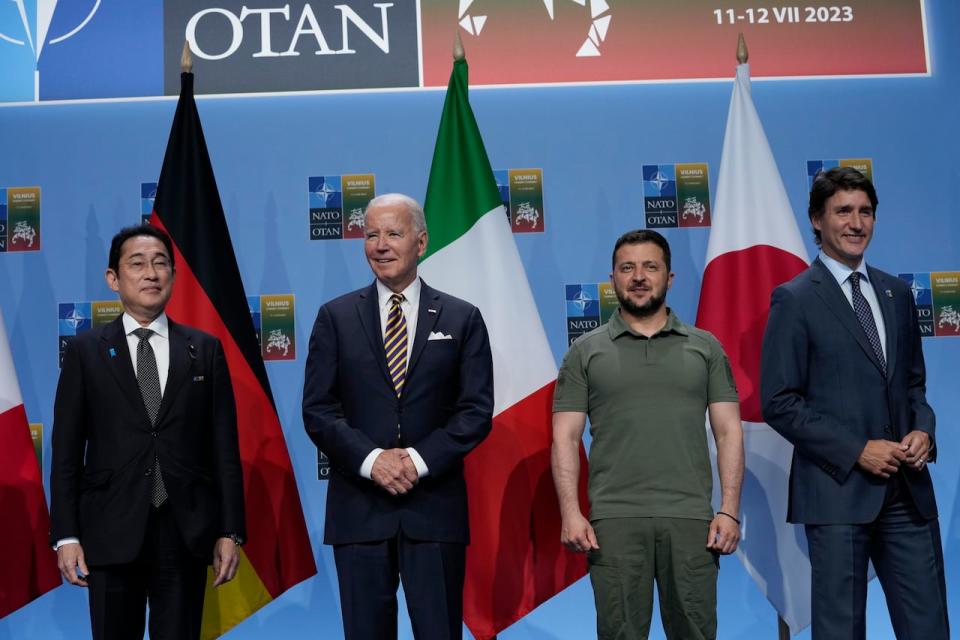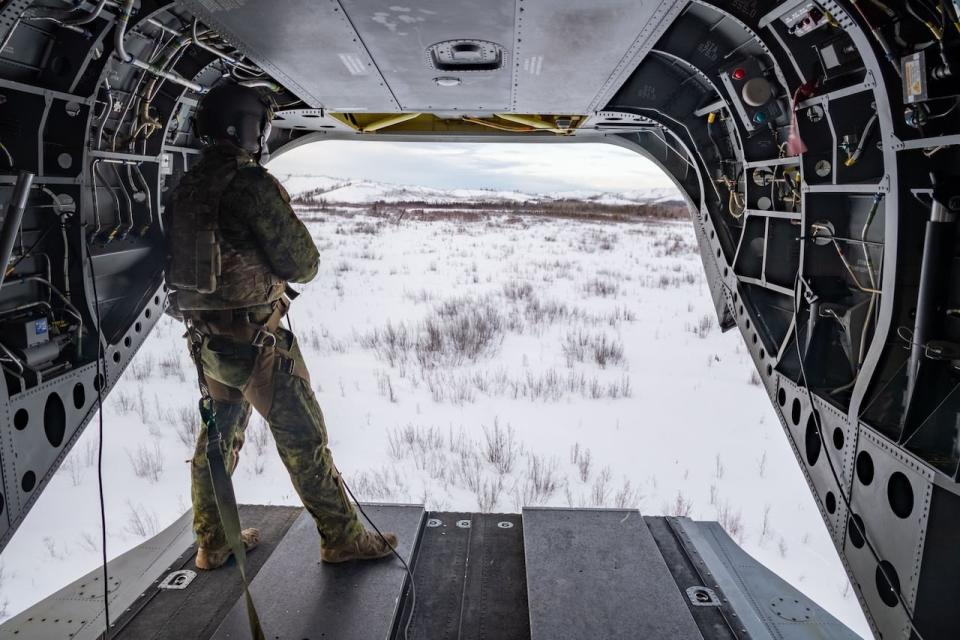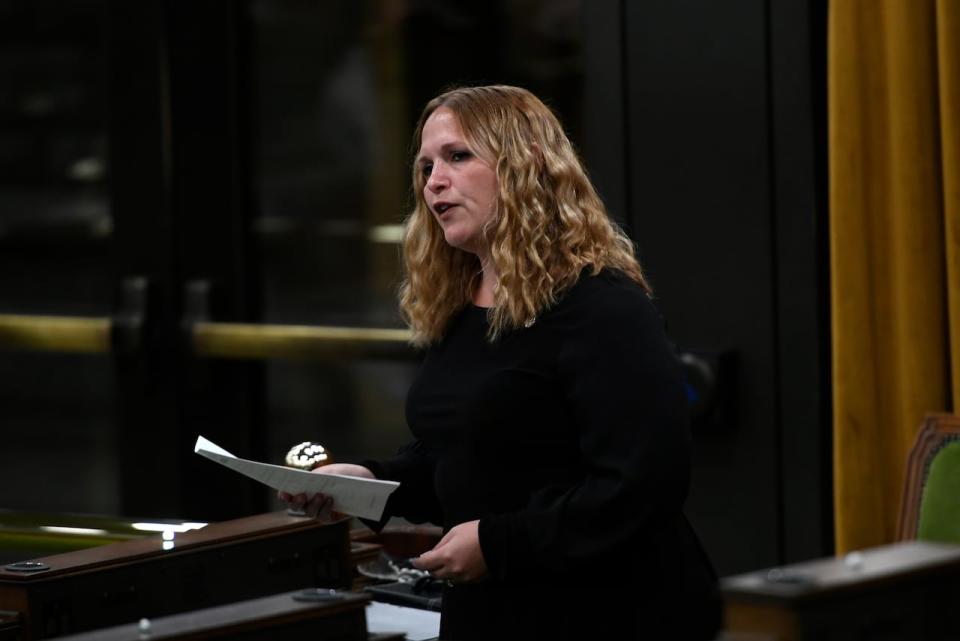Rising economic indicators pushing Canada further from NATO spending target, MPs hear
Newly revised economic data suggests Canada's pledge to bring its defence spending closer to NATO's benchmark is coming off the rails already, a House of Commons committee heard Monday.
A little more than two months after the Liberal government promised to increase its defence spending to 1.76 per cent of the gross domestic product by the end of the decade, a defence analyst told MPs that target likely won't be reached.
The pledge was made in Canada's new defence policy, Our North, Strong and Free, released back in April. It still falls short of NATO's benchmark, which calls on member states to spend at least the equivalent of two per cent of their national GDP on defence and security.
On Monday, NATO issued a report tracking all member countries' projected defence spending for 2024; it forecast Canada would spend 1.37 per cent of its GDP on defence.
"Since [the new defence policy] was published, the [Organisation for Economic Co-operation and Development] economic projections used in that calculation have already been revised upwards for the next two years, which means that [Canada's] share of GDP spent on defence will drop," Dave Perry, president of the Canadian Global Affairs Institute (CGAI), told the House of Commons defence committee on Monday.
"As a result, as of today, we are already falling short of the spending as a share of GDP outlined in the policy."
Defence spending measured as a percentage of GDP can rise or fall depending upon how well the economy is doing. If the fiscal outlook improves, the percentage of GDP being spent on defence goes down; the reverse is true if the economy declines.
At last year's NATO summit in Vilnius, Lithuania, allies agreed to make the two per cent benchmark "an enduring commitment." The western military alliance has called on members to draw up plans to meet the target within the next few years.

Canada is the only NATO country that has not yet articulated a clear plan — and allies have started calling out Ottawa publicly.
The debate before the defence committee comes as Secretary General of NATO Jens Stoltenberg visits Washington on Tuesday and is expected in Ottawa on Wednesday.
Perry told MPs the new defence policy "clearly conveys that we have no intention" of meeting the goal, despite pressure from allies.
Last week, one of the country's leading business voices warned that Canada faces "diplomatic isolation" if it's not prepared to deliver a concrete plan next month in Washington, when leaders gather to mark NATO's 75th anniversary.
In a letter to Prime Minister Justin Trudeau, the Business Council of Canada said that isolation would undermine both security and economic partnerships, with "broad ramifications for all Canadians."
Youri Cormier, the executive director the Conference of Defence Associations Institute (CDAI), said the Americans are expecting Canada "to show leadership," especially in the Arctic.

The CDAI and the CGAI host conferences that occasionally receive sponsorship from defence industry contractors.
Both Defence Minister Minister Bill Blair and Foreign Affairs Minister Mélanie Joly have suggested that the federal government is working on a plan that will — through additional purchases of equipment, such as new submarines — bring Canada up to and possibly over NATO's two per cent target.
But retired vice admiral Darren Hawco, a former Canadian military representative at NATO, said the accuracy of that claim depends on how much equipment is purchased and when.
"The ultimate dollar value would probably still be based on projections [and] we would still not necessarily see that two per cent [goal]," Hawco told the House of Commons defence committee. "I mean, the dollar value that we're talking about to achieve two per cent is quite significant."

The testimony from Hawco and Perry on Monday faced deep skepticism from New Democrat defence critic Lindsay Mathyssen, who noted that no major federal party leader has endorsed the two per cent benchmark.
"We go back and forth and there's obviously a belief here today that that two per cent is a big deal," Mathyssen said. "And yet we've consistently heard that two per cent is an arbitrary number. Each country defines how they spend per cent differently."
Perry noted that NATO has a framework for deciding what gets counted toward the two per cent benchmark and member countries can't decide on their own what qualifies as military spending.
Some academic studies and commentary pieces have suggested the two per cent benchmark is a poor way to measure a country's military contribution.
Hawco said it's the benchmark NATO allies agreed on. He equated it to the household mortgage stress tests used by financial institutions.
It's "a rule of thumb that seems sensible … and that's very important," he said.

 Yahoo News
Yahoo News 
